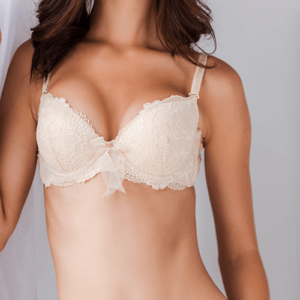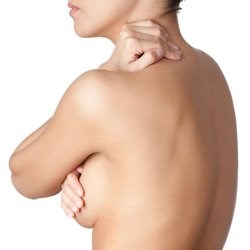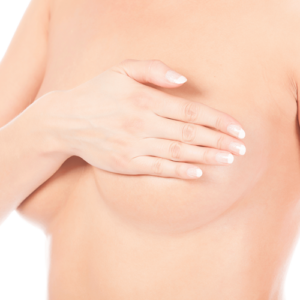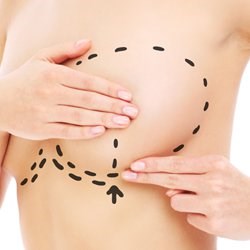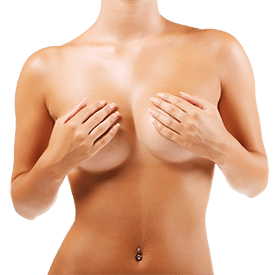SIGNATURE BREAST AUGMENTATION
Feeling attractive is an important part of being a woman. When in the correct proportion to your body, your breasts can complement your figure and increase your sense of self confidence. But for many women, living with disproportionately small, sagging, or deflated breasts can make an enormous impact on their overall quality of life. At our Beverly Hills office, Dr. Schwartz is one of the best breast augmentation doctors in Beverly Hills that offers many different breast augmentation techniques to suit every patients' desired goals.
INCREASE YOUR BREAST SIZE
The primary goal of breast augmentation surgery is to naturally increase the size of your breasts using breast implants, a fat transfer, or a combination of both. Dr. Jaime Schwartz from Beverly Hills, and an international breast augmentation surgeon, will evaluate your goals, desires, body shape, asymmetries and add his vast experience during your consultation to help determine the most proper implant type, size, and technique that will give you the most beautiful results.
WHY DO WOMEN (AND MEN) TRAVEL THROUGHOUT THE WORLD TO SEE DR SCHWARTZ FOR BREAST AUGMENTATION
Dr. Schwartz is well known as one of the best breast augmentation surgeons in California as well as internationally as being a thought leader and expert in breast surgery and implants. Internationally he is often invited to speak about breast surgery and Nationally he sits on many committees for the American Society of Plastic Surgeons both of which allow him to dedicate time to advancing the field of plastic surgery. He has developed national guidelines for breast surgeries and implants and also oversees FDA clinical trials for breast implants as well as breast scarring. He is very well known for fixing some of the most “Botched” plastic surgeries which is why he was featured on the hit TV show. Behind the scenes, his colleagues and previous patients will tell you, if you have had more than 5 breast revision surgeries by other doctors (sometimes over 20) you will eventually end up in his office.
Dr. Schwarz uses all of this knowledge as well as having performed thousands of breasts surgeries for each patient to tailor the results they are looking for. He utilizes techniques such as measuring the base diameter as well as the breast height to perfectly match and implant for each person. By using these measurements he can “build” a natural breast starting at the top of the breast where we want the implant to sit and working downward to match the chest contours perfectly. Dr. Schwartz truly believes in the most natural look and can show you how a perfectly sized and placed implant does not have to be extremely large to give the desired look for some of Hollywood’s as well as discerning clientele throughout the world.
A consultation with Dr. Schwartz is best described as "the most informative" and some have said it was "enlightening" to learn every aspect of breast augmentation. He explains the nuances in the techniques used while always focusing on safety. Dr. Schwartz has developed an entire system focusing on patient care from prior to the procedure, during the procedure with specialized anesthesia and concierge aftercare that is known is Schwartz Rapid Recuperation™.
FULLER BREASTS
Many mothers choose a breast augmentation to correct the volume loss and sagging that often results from pregnancy and breastfeeding. Clients looking to restore volume to their breasts after childbearing or breastfeeding may benefit from a signature breast augmentation. Also, women with underdeveloped breasts looking for a breast enhancement that complements their body and fills out their proportions may benefit from a signature breast augmentation with Dr. Schwartz.
Dr. Jaime Schwartz in Beverly Hills has developed precise measurement techniques to make sure that your breast augmentation will fit your body and your individual aesthetic goals. Whatever your desired outcome Jaime Schwartz Plastic Surgery makes sure that you'll have the best breast augmentation experience in Beverly Hills, CA, and even internationally.
CORRECT ASYMMETRY
Breast asymmetry is fairly common — in fact, most breasts are asymmetrical. Unevenness between breasts can vary in severity; one side can be a little bit larger or smaller than the other, or there may be a complete absence of a breast on one side. A breast augmentation can be used to correct asymmetry. Dr. Schwartz has a keen eye for pointing out asymmetries that some people did not even realize they had. Preoperative planning is one of the most crucial parts of performing any surgery. It allows for proper surgical planning since together you and Dr. Schwartz can determine a treatment plan that will bring better balance to your breasts.
TUBEROUS/CONSTRICTED BREASTS
More often than not, Dr. Schwartz points out to women that the reason they have different breasts then their friends and family is due to a Tuberous or Constricted breast. These breasts are often shorter at the bottom due to a high riding inframammary fold. There is also a constrictive band that encircles the breast internally which gives it a more long appearance, pointing downward which is known as tuberous, since a tuber is a long vegetable that this resembles. It is also usually associated with a larger then normal areola since the breast tissue is pushed up into it known has "herniation" which stretches the areola. Overall, the goal of breast augmentation with a tuberous or constricted breasts is to change the proportions of the breast. A natural, aesthetically pleasing breast should have approximately 45% of the volume above the nipple and 55% below it. This is what gives a more natural breast shape with a good slope yet still allowing for cleavage. Dr. Schwartz meticulously has to create these proportions and shape by not only placing implants but also releasing the internal constrictions to allow the breast and implants to work harmoniously in creating in natural breast shape.
VECTRA 3D IMAGING
During your initial consultation, Dr. Schwartz will use the VECTRA® 3D imaging system to help you better visualize your results, and to provide him with precise, detailed information about your breast size and breast tissue distribution. Vectra takes a high resolution, three-dimensional photograph of your entire body, allowing Dr. Schwartz to digitally insert breast implants of different sizes under your breasts and show you what your potential results could look like.
BREAST AUGMENTATION REVIEWS
SALINE VS. SILICONE
SALINE BREAST IMPLANTS
Saline breast implants have certain advantages, like their lower cost and safety. If a saline implant ruptures, the harmless solution is simply absorbed by the body, as the liquid used is the same one found in an IV. Additionally, saline implants are inflated after they are inserted into the breast pocket.
SALINE BREAST IMPLANTS:
- Filled with sterile saltwater encased in a silicone shell
- Can be filled to different volumes from side to side to correct asymmetry
- Tend to have more rippling
- Tend to feel less natural
- Tend to have higher implant rupture rates
- In some cases may have higher capsular contracture rates
MOTIVA IMPLANTS
Available in two styles and two textures, Motiva Implants® is an innovative new option for women considering breast augmentation. Combining elastic and soft gels, Motiva Round™ and Motiva Ergonomix™ allow for a more natural-looking, feeling, and moving breast that maintains softness over time. Motiva implant placement is less invasive than other breast surgeries with a gentler surgical technique, leading to a faster recovery, less scar tissue, and a better overall experience. Dr. Schwartz currently only offers Motiva Implants - Breast Augmentation Surgery at his Dubai location, but as Motiva becomes FDA approved in the United States, he looks forward to offering it to Beverly Hills, CA patients as well.
SILICONE AND "GUMMY BEAR"
Silicone breast implants have the advantage of feeling and looking extremely natural. They come in different profiles with varying projection. They tend to offer the most natural feel and look when they are measured and chsen properly for your body. They are ideal for clients with less natural breast tissue to work with.
ROUND SILICONE GEL BREAST IMPLANTS:
- Are chosen by 80% of women worldwide
- Have a lower rupture rate
- Possess a more natural shape
- Have less rippling
- Tend to be the softest, most natural feeling implants
Another type of popular silicone implant is the "gummy bear" or cohesive gel implant. One advantage of the gummy bear implant is that the implant is anatomically tear-shaped, mimicking the organic curves of the breast.
ANATOMIC OR GUMMY BEAR IMPLANTS:
- Were FDA approved in 2013
- Possess solid consistency and firmness
- Have a denser silicone core, more like a solid than a soft gel
- Are an excellent choice if one is undergoing reconstructive surgery
- Are an excellent choice for transgender patients (MTF) undergoing top surgery
- Lower risk of capsular contracture and rupturing
- Fact: one of the reasons its called a "Gummy Bear" implant, is that if you bite the head off of gummy bear candy, it does not change shape. These implants react the same way since they always maintan their shape.
HOW TO CHOOSE
Dr Schwartz has the advantage after placing hundreds to thousands of each of these implants and being one of the highest volume users of "Gummy Bear" implants, to help you decide which breast implant to choose. As a rule of thumb, if you have a very pleasant breast shape to begin with, you will do extremely well with a round, silicone gel implant since it naturally enhances your breast. If you are lacking breast tissue or have a poor shape, a gummy bear or anatomic implant might be a better choice. Clients with a true A-cup or less, women who have undergone mastectomy or MTF Top surgery candidates should consider this type of breast implant with Dr Schwartz's guidance.
MANUFACTURERS
Dr. Schwartz prefers to use Mentor®, an American breast implant manufacturer, known for their superior safety aspects as well as their lifetime guarantee. He is also a principle investigator in the GLOW Study, a Mentor® clinical study investigating the long-term performance of Mentor® MemoryShape™ and MemoryGel™ breast implants. The study is open to any and all breast augmentation patients. Clients who qualify for the study will receive compensation for their participation in the clinical trial, as well as a free enhanced warranty from Mentor®. Dr Schwartz and his team can assist you in trying to qualify for the GLOW study.
PROFILES
Implants come in high, medium, and low profiles. The volume of the implant is the same, but the amount of projection increases with each profile, and the base diameter of the implant gets more narrow.
For greater than 90% of clients, a medium profile is the best because it gives just enough upper pole fullness as well as projection. However, with Dr. Schwartz's specific measurements, once in a while he will recommend using a low profile or high profile implant.
SHAPE
Implants come in round and anatomic shapes. Dr. Schwartz specializes in both types of implants and has an extensive background in using anatomic implants. If a client has a nice shape to their breasts already and just wants an increase in volume, Dr. Schwartz tends to recommend round implants. If a client has an undesirable breast shape, such as flat chested, or has had breast tissue removed after a mastectomy, Dr. Schwartz tends to recommend anatomic silicone implants.
TEXTURE
Implants can be either textured or smooth. The most common implant used in the United States is a smooth, round, silicone gel implant. Textured implants are sometimes recommended when the implant is placed over the muscle or if there is a history of capsular contracture.
Textured implants have been linked to BIA-ALCL (breast implant-associated anaplastic large cell lymphoma). Out of millions of implants place in the world, there are less than 400 cases of this. The treatment, should it occur, is to remove the implant and the capsule. Because it is such a small number of cases, textured implants may still be used safely.
There are different types of texturing among implant manufacturers. Mentor implants are known to have a less aggressive texturing, and have been rarely linked to BIA-ALCL.
IMPLANT PLACEMENT
Dr. Schwartz will choose to either place the implant in a subglandular position, meaning under the breast tissue but above the pec muscles; or he will place the implants in a sub-muscular position, below the pec muscles. The most common placement of implants in the United States is in the sub pectoral also known as sub muscular position. The reason for this is it is the safest place to decrease the risk of capsular contracture. It is also recommended for patients with very little breast tissue since the muscle will help camouflage the implants and give a more natural appearance.
INCISION TYPE AND SCARRING
Dr. Jaime Schwartz will help you to choose the best type of incision, based on your anatomy, aesthetic goals and lifestyle.
INFRAMAMMARY FOLD (IMF): This incision is the most common in the United States and also Dr. Schwartz's preferred method for implant placement. The reason being is that this incision has been shown to have a decreased risk of complications, including capsular contracture and loss of nipple sensation, because the implants do not come in contact with the breast tissue where bacteria could contaminate the implant and increase inflammation. Another important reason why this is a preferred incision method is because it gives more direct access to the muscle and the pocket to place the implant into. The IMF incision is also beautifully camouflaged underneath the breast and can be completely obscured when wearing a bra or bikini.
PERIAREOLAR: This incision is placed between the darker areola skin and the lighter skin of the breast. The drawback with this incision is that if it doesn't heal well, you may have an undesirable scar on the front of the breast, rather than underneath it. Dr. Schwartz also feels there may be a trade off in safety since it is linked with higher capsular contracture rates and possibly decreased nipple sensation in comparison to the IMF incision. However, if a client prefers this incision, or is going to have a breast lift at the same time, this may be the best incision for the implant placement.
TRANSAXILLARY: Also known as an armpit incision, this is Dr. Jaime Schwartz's least preferred method for placing a breast implant. The reasons are that the surgery is more difficult and involved, since an endoscope may have to be utilized to complete the pocket creation where the implant will be placed. Also, if the scar heals poorly in the armpit, it will always be visible in all types of clothing. Furthermore, it has a higher overall revision rate and when you need to replace the implants, it is most likely done through the Inframammary fold or the Periareolar incision.
WHAT ABOUT SCARRING?
Dr. Schwartz is a leading scar expert who has published journal articles and national journal supplements on the subject of scarring and advanced wound healing. He has also served as the principal investigator for an FDA clinical trial studying breast scars and their healing and improvement. No matter what incision type is chosen for your breast augmentation, Dr. Schwartz will be taking the utmost precautions and utilizing many advanced methods to relieve tension on the incisions, and prevent poor scar healing. There are two main reasons for how scars heal. The first is genetic, if you have a propensity to create thicker, hypertrophic or keloid scars there is nothing that can be done differently or specially during surgery to prevent this. If this happens Dr. Schwartz will work with you to try in minimize this scar. The second and most common is if the scars our place under tension during the healing phase they will tend to form thicker or spread scars. Dr. Schwartz using his vast wound healing knowledge has developed a system to keep tension off the scars while they are healing. He tells his patients jokingly that "the dressings he uses are there to protect his surgery from you". What he means is that during the initial weeks after surgery is when the incisions our weakest and can easily be pulled apart with something as simple as sleeping. Dr. Schwartz has figured out away to mitigate this with his scar healing system. Utilizing his knowledge from his own wound healing publications the easiest way to understand scars is that for the first six months they are in an inflammatory healing phase. During this phase the body is trying to rapidly heal by placing collagen down as quickly as possible which is in immature form. Due to the inflammatory nature, the scars appear redder and thicker. From six months to over a year they undergo a maturation phase where immature collagen is replaced with stronger more mature collagen which tends to appear as less colored and flatter. While scar formation is natural after surgery and is largely based on your body's ability to heal, most scars tend to fade over time. Dr. Schwartz uses every last bit of scientific data to give you the best results possible.
SCHWARTZ RAPID RECUPERATION™
Schwartz Rapid Recuperation™ is a term used to describe a combination of techniques Dr. Jaime Schwartz uses to accelerate the recovery process after your breast augmentation.
Schwartz Rapid Recovery™ starts with anesthesia. Dr. Schwartz uses a gentler form of general anesthesia called TIVA, which stands for total intravenous anesthesia. Breast augmentation clients are given an IV with medication that puts them in an adequate state of anesthesia without needing to use a breathing tube or anesthetic gases. You will essentially be asleep for the duration of the procedure and breathing on your own.
Because TIVA medications wear off quickly and are typically out of the body in a few hours, you are less likely to feel nauseous after the procedure. In fact, the IV medication has an anti-nausea effect, resulting in a shorter time in the recovery room and an overall smoother experience.
Another component of Schwartz Rapid Recuperation™ is minimizing the discomfort of surgery. Dr. Schwartz may inject BOTOX® into the muscles of your chest prior to surgery, or use EXPAREL® (a long-acting local anesthetic) which he places into the muscles during surgery. Most clients take only TYLENOL® after their breast augmentation procedure, can go out to dinner the following night, and typically return to work within one week.
Support from Dr. Schwartz’s team will be available to you 24/7 after your breast augmentation.
As you and Dr. Schwartz develop your treatment plan together, you will come to realize that you are in the best possible hands for breast augmentation in Beverly Hills.

PLAN YOUR PROCEDURE
Procedure Recovery Location Out-patient
This is the surgeon's fee only. Other fees apply.
BREAST AUGMENTATION FAQS
IS SILICONE SAFE?
The amount of silicone material released from silicone breast implants is extremely minimal. In fact, it is less than what is absorbed from daily consumer products containing silicone.
Over 200,000 women have participated in Mentor’s clinical studies in order to provide a significant body of evidence demonstrating the safety and effectiveness of silicone-filled breast implants. Dr. Schwartz would choose this type implant for his own family. In fact, he would not perform a procedure or use any device that he would not use on his own family.
BREAST AUG OR LIFT?
It's important to remember that a breast augmentation procedure cannot elevate the breasts, but can only enlarge them. To both augment and elevate the breasts, a combination procedure with mastopexy (breast lift) may be the ideal choice. Again, Dr. Schwartz will help you determine what's best for your needs and goals during your consultation.
FAT TRANSFER?
Some women choose to have a fat transfer as part of their breast augmentation. This method takes fat from elsewhere in the body, typically unwanted areas such as the abdomen, flanks and thighs, and places it in the breasts. This can be performed in conjunction with implants to improve contour, or alone to achieve a modest increase in breast volume. The main difference between fat transfer and implants is that implants are precise and will maintain their volume. Fat transfer is less predictable with the results better seen at six months. Fat grafting may also have to be done more than once. The positive of breast fat grafting is that it is your own tissue which is natural and does not need to be replaced like an implant.
HOW LONG DO THEY LAST?
Breast implants are not intended to last forever. The FDA recommends removal of breast implants at some time in the future. Dr Schwartz advise that you begin thinking about exchanging them around 10-15 years after placement based on clinical data.
SCHWARTZ RAPID RECUPERATION™
Schwartz Rapid Recuperation™ is a term used to describe a combination of techniques Dr. Jaime Schwartz uses to accelerate the recovery process after your breast augmentation.
Schwartz Rapid Recovery™ starts with anesthesia. Dr. Schwartz uses a gentler form of general anesthesia called TIVA, which stands for total intravenous anesthesia. Breast augmentation clients are given an IV with medication that puts them in an adequate state of anesthesia without needing to use a breathing tube or anesthetic gases. You will essentially be asleep for the duration of the procedure and breathing on your own.
Because TIVA medications wear off quickly and are typically out of the body in a few hours, you are less likely to feel nauseous after the procedure. In fact, the IV medication has an anti-nausea effect, resulting in a shorter time in the recovery room and an overall smoother experience.
Another component of Schwartz Rapid Recuperation™ is minimizing the discomfort of surgery. Dr. Schwartz may inject BOTOX® into the muscles of your chest prior to surgery, or use EXPAREL® (a long-acting local anesthetic) which he places into the muscles during surgery. Most clients take only TYLENOL® after their breast augmentation procedure, can go out to dinner the following night, and typically return to work within one week.
Support from Dr. Schwartz’s team will be available to you 24/7 after your breast augmentation.
As you and Dr. Schwartz develop your treatment plan together, you will come to realize that you are in the best possible hands for breast augmentation in Beverly Hills.


